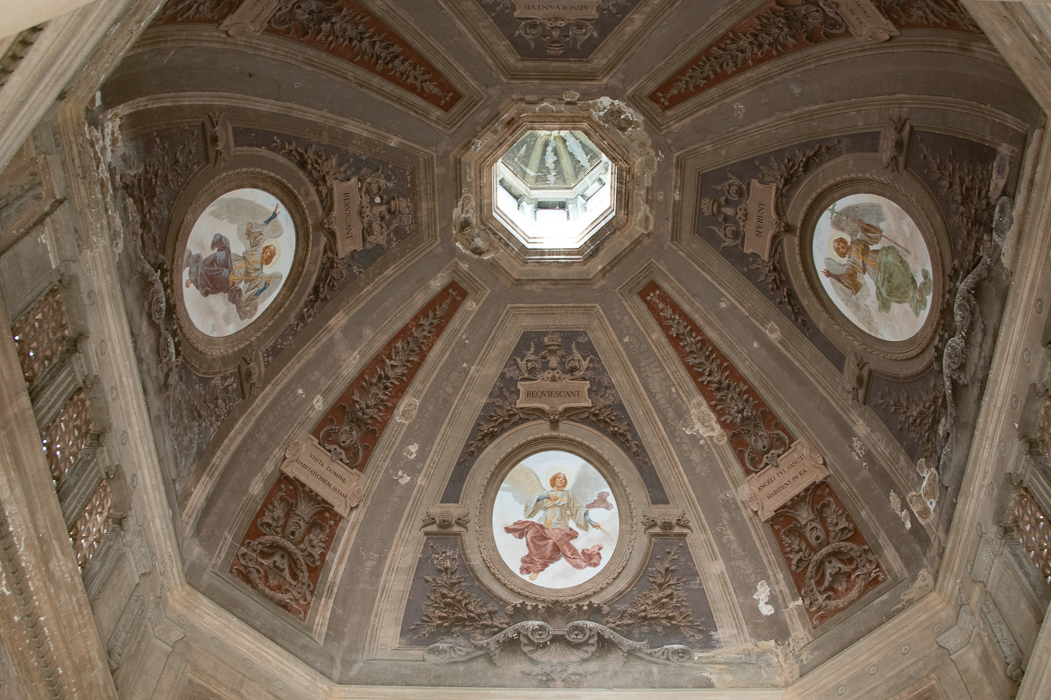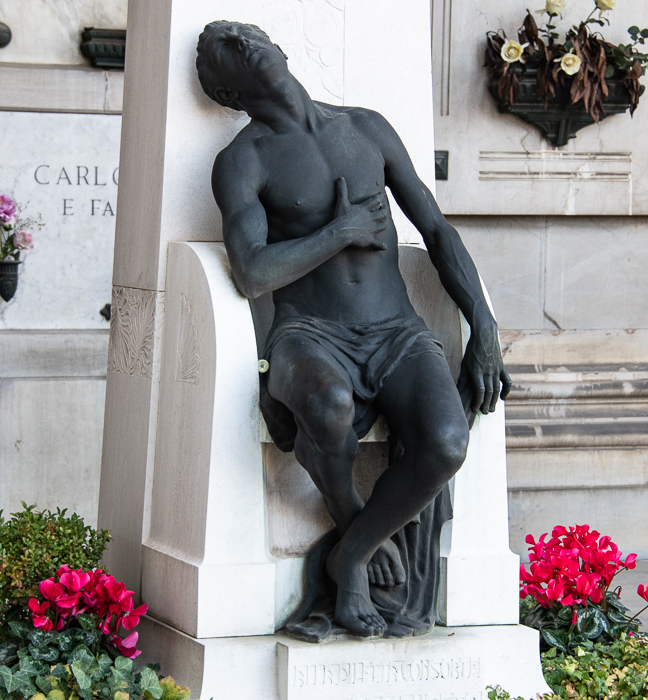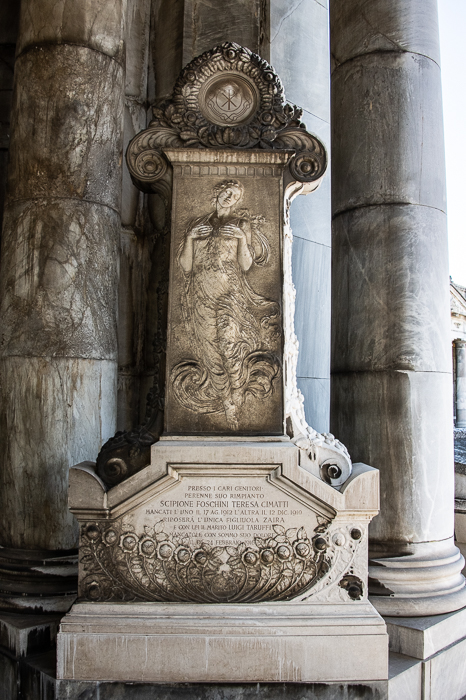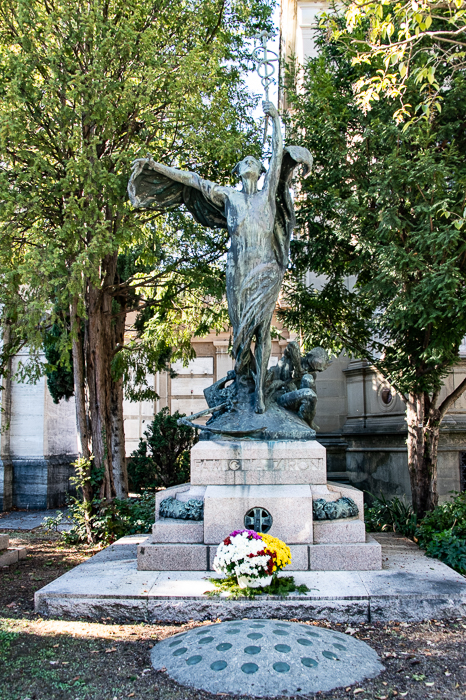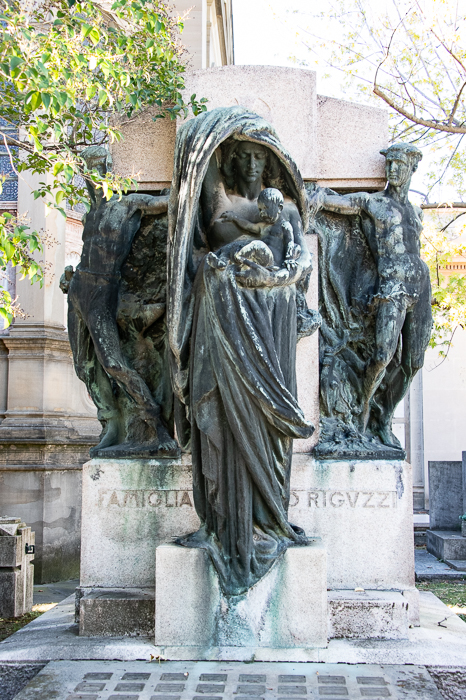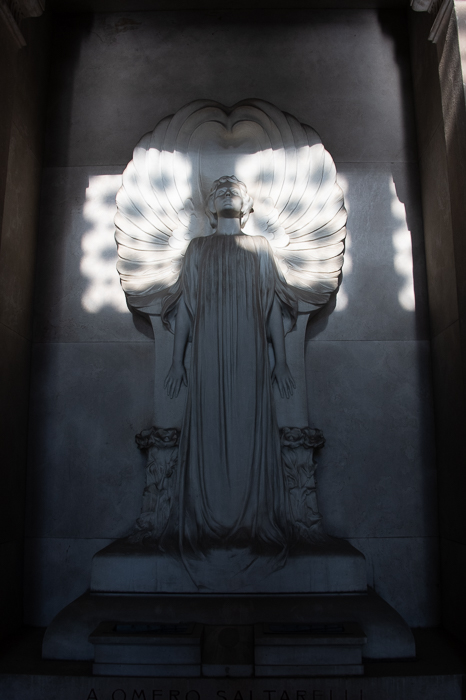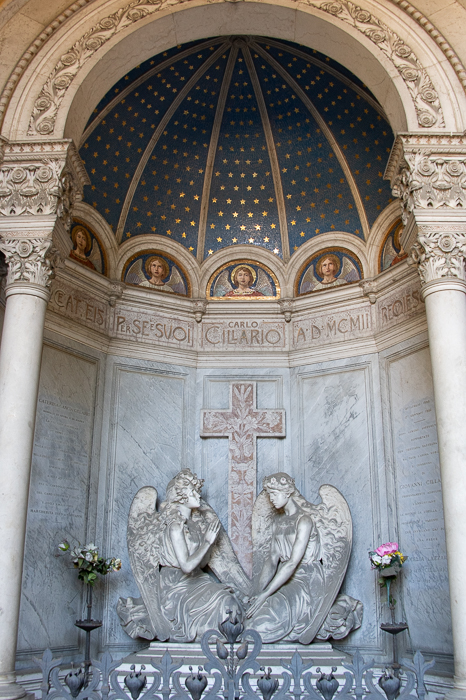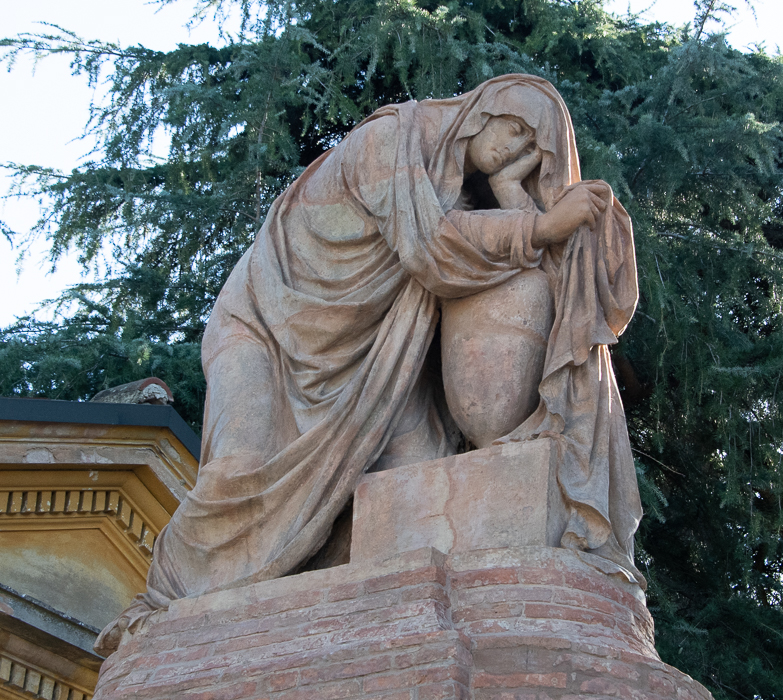November 2022
The Certosa di Bologna was a Carthusian monastery established in 1334. It expanded and flourished, and became an expansive complex with a series of internal courtyards, gardens, buildings for lodgings amidst chapels, and a larger church. In 1367 the encircling walls were built to make it an enclosed cloistered community. It became one of the largest and most beautiful monasteries of the order.
With the introduction of the Napoleonic Edict of Saint-Cloud, stating that Europe burials were prohibited within city walls, Bologna began looking for a site for the dead. The most suitable site was the grounds of the newly suppressed Order of Carthusian Monks, with its ring of cloisters. Suppressed, of course by Napolean, when he established a republic and abolished all monasteries.
The first illustrious tombs were simply painted in tromp l’oeil because the families only considered them temporary burials. They expected a return to traditional burials in family chapels.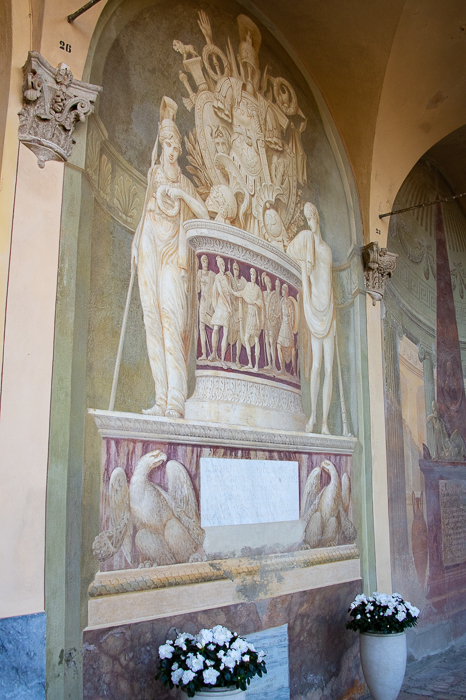
However, as the years passed, elaborate and often massive tombs and memorials were built within the various cloisters. Some of the chapels were also turned into burial spaces, and in keeping with Bologna’s love of porticos, these were also added.
Etruscan tombs were found in the Certosa cemetery, between 1869 and 1871, leading to a successful series of archaeological excavations, directed by the Bolognese archaeologist Antonio Zannoni. The materials coming from the tombs, which date back to the middle of the VI and IV centuries BCE are now in the Archaeological Civic Museum.
Despite several hours spent at the Certosa cemetery I only saw a fraction of the grounds. While there are maps, they are wonderful for not getting lost, but not much help on the artists that created so many of these wonderful tombs, and further research did not yield much information either. These are a few that I found extra special.

A 1950 memorial to Fabio Frassetto, an anthropology professor who passed away in 1933, which acknowledges his son Flavio who was killed in 1945 in military service.
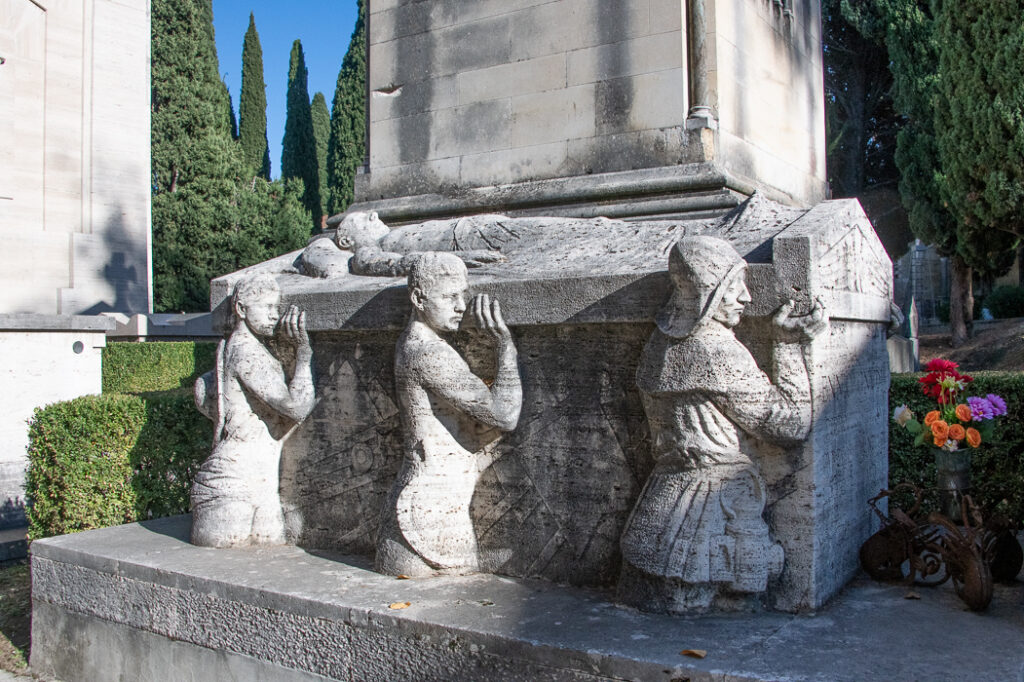
Bologna mayor Ennio Gnudi’s resting place is marked by this 1951 marble sarcophagus carried by six workers representing his life as a union official.
The magnificent sculptures at the “Entrata Principale” are by sculptor Giovanni Putti. He would go on to produce about 30 monuments between 1815 and 1830
Two sculptures of the Entrata Principale
The statues are a statement of the inevitability of death. Popularly known as Piangoloni or Piagnoni (Lamenters), they immediately became symbols of Certosa and sealed the artist’s fame. Soon after he moved to Milan he obtained his most important commissions at the construction sites of the Duomo and the Arch of Peace.

